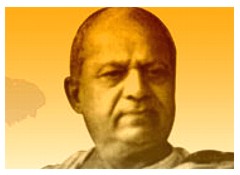
Biography / Profile:
Dhundiraj Govind Phalke by original name was born on 30th April 1870 in Trimbakeshwar near Nasik. Born Indian nation has given a great contribution to Indian cinema. Phalke did his art education from J.J school of art – Mumbai (that time Bombay) from 1885 till 1890 and then moved to Kalabhavan Baroda.for higher education in arts
Phalke’s father was an accomplished Sanskrit scholar. Phalke started his professional career as portrait photographer In Godhra but left business after the death of his first wife and child in an outbreak of the plague. He even went on to do stage makeup, and also assisted a German illusionist named Carl Hertz due to his great interest in magic. He started Phalke’s Art Printing & Engraving Works at Lonavala in 1908, and later Laxmi Art Printing for making photolitho transfers of Ravi Varma’s oleographs. He also went to Germany to buy three-color printing machines. The changing point in Phalke’s life was when he first time saw silent film “The Life of Christ”. The film made such a great impact on his mind that he began to think if such films could be ever made with Indian themes. After raising some money and experimenting with a few short films, he went to London in February 1912 to learn the art and craft of film-making. Cecil Hepworth of Walton Studios trained him in the craft of film-making. Phalke bought a Willamson camera and returned India and set up Phalke Films in Bombay (current Mumbai).His second wife Saraswati Phalke was an active partner in the venture, who not only managed the Studio but also looked after the technical aspects of film-making. These efforts gave birth to first India’s full length cinema named “Raja Harishchandra” in 1912. With this Indian cinema began to grow and the current picture is well known to everyone.
In 1918 he established Hindustan Films along with 5 other business partners and later resigned in 1920. After his last film, Phalke retired from film making. He died on 16 February 1944.
Filmography:
Movie(s)
Raja Harishchandra (1913):- It was made in 4 reels. All the characters were played by male star cast.
Shri Krishna Janma (1918)
Kaliya Mardan (1919) – Phalke’s daughter played the role of boy Krishna
Setu Bandhan (1923)
Gangavataran (1937)
Award(s):
To honor this legend Indian government has started with Dadasaheb Phalke Award. This award is bestowed to the person who has dedicated his life and given a valuable contribution to Indian cinema. It is described as lifetime achievement award. Devika Rani was the first to receive this award in 1969. Lata Mangeshkar, Asha Bhosale, Dev Anand, Naushad are one of the few to receive this award.
Every Indian is thankful to this great man for his selfless devotion and being a pioneer to start the new era of entertainment called ‘Cinema’.